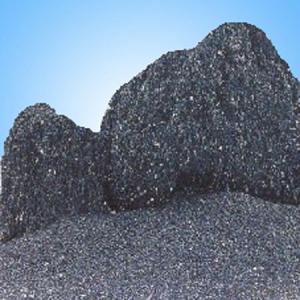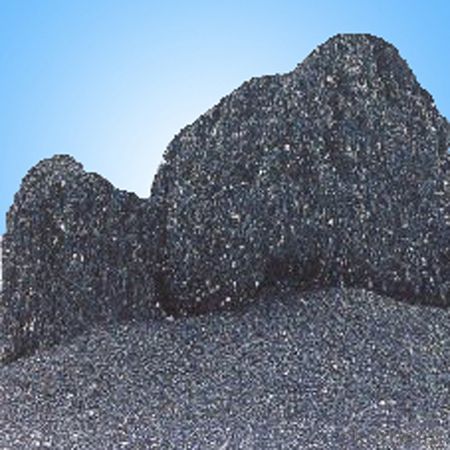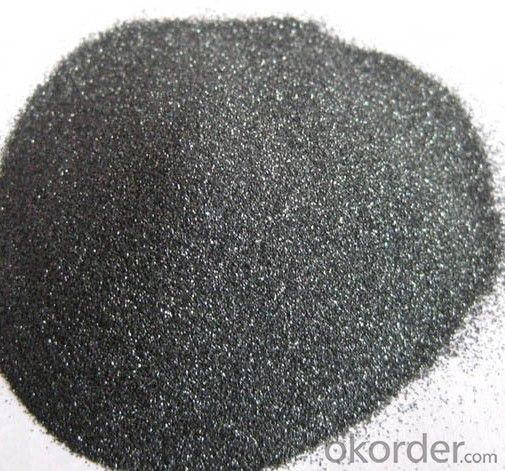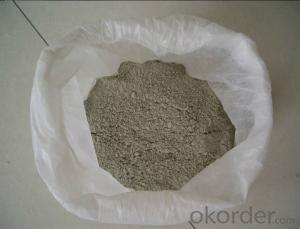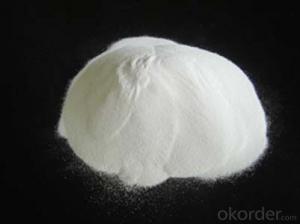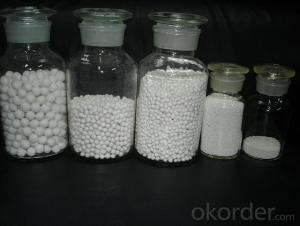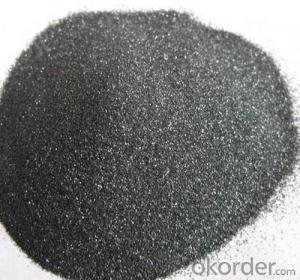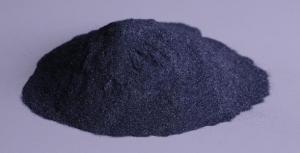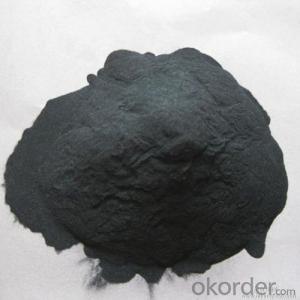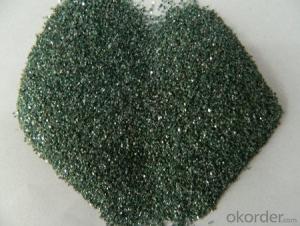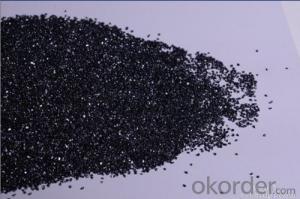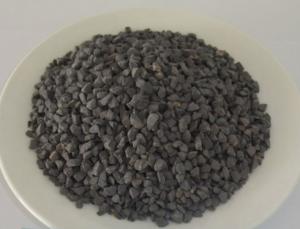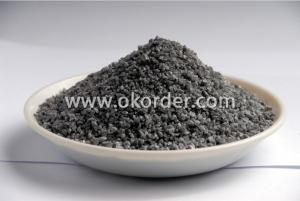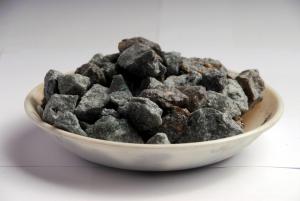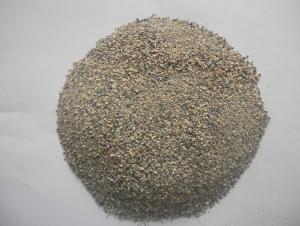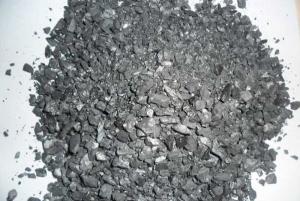Raw Materials for Refractory:Silicon Carbide as Steelmaking Deoxidizer Replacing Ferro Silicon
- Loading Port:
- China main port
- Payment Terms:
- TT OR LC
- Min Order Qty:
- 25 m.t.
- Supply Capability:
- 2000 m.t./month
OKorder Service Pledge
OKorder Financial Service
You Might Also Like
Quick Details
| Place of Origin: | Henan, China (Mainland) | Brand Name: | CNBM | Model Number: | Si-C |
| Application: | refractory or abrasives | Shape: | Lump | Material: | SiC |
| Dimensions: | Si:56%±1, C:17±1 | Chemical Composition: | Silicon ,Carbide |
Packaging & Delivery
| Packaging Details: | 1mt/big bag |
| Delivery Detail: | with 20 work days after deposit |
Product Description
Steelmaking Deoxidizer Silicon Carbide Replacing for Ferro Silicon
As the new alloy for converter, Si-C alloy can replace Ferro Silicon to be used as deoxidizer.
Characters: lower steelmaking cost, increase economic benefit, improve product quality and stable performance.
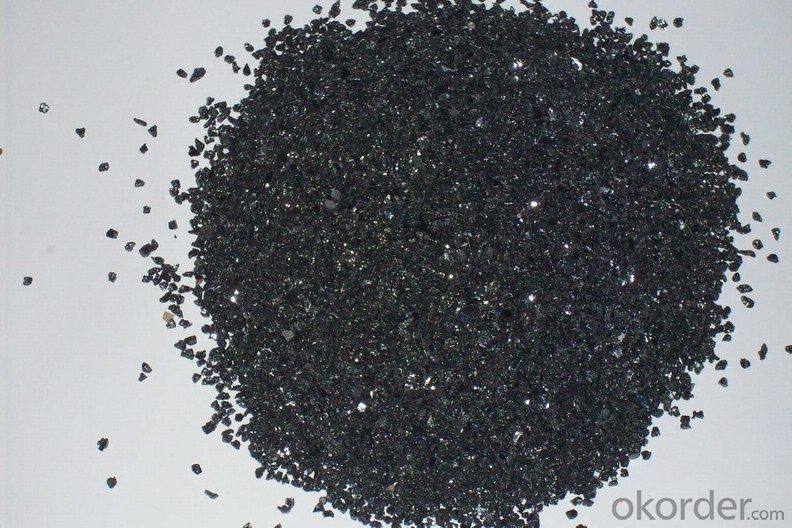
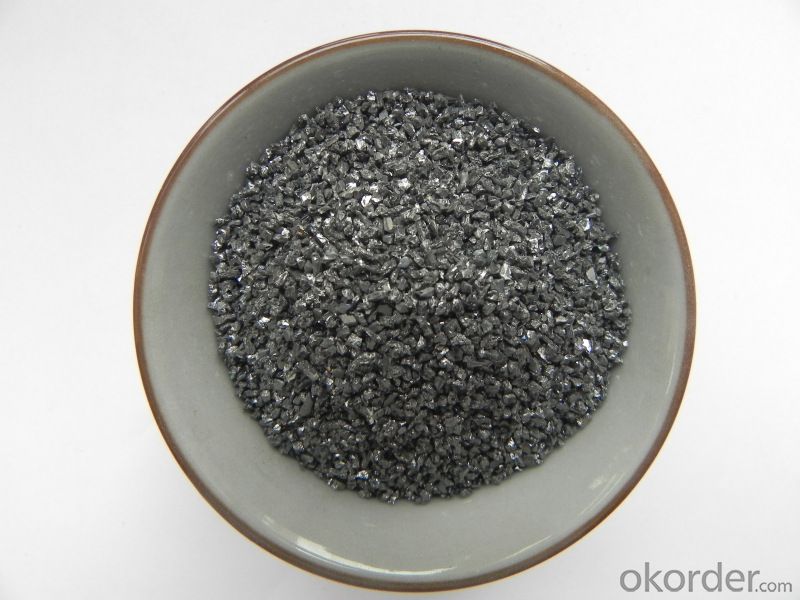
Si-C:
1. Replace Ferro Silicon
2. Reduce the alloy quantity
3. Improve the quality of liquid steel (reduce carburant )
4. Lower production cost
Optimization Solutions:
Steel | FeSi Solution | Si-C Solution |
HRB335 | MnFe+FeSi+SIAlFe+SiC+Carburant | MnSi + Si-C |
Q195 | MnFe+FeSi+SiAlBaCa+Wire Feeding | MnSi+Si-C+SiAlBaCa+Wire Feeding |
Q235 | MnFe+FeSi+ SiAlBaCa+Carburant | MnSi+Si-C+SiAlBaCa |
How to Use?
HRB335: During tapping, add SiMn Alloy when the liquid steel tapped about 1/3, at the same time, put Si-C gradually to the steel ladle.
Q195: During tapping, add SiMn Alloy when the liquid steel tapped about 1/3, then SiAlBaCa, at the same time, put Si-C gradually to the steel ladle, and feed wire at argon blown station.
Q235: During tapping, add SiMn Alloy when the liquid steel tapped about 1/3, then SiAlBaCa, at the same time, put Si-C gradually to the steel ladle.
Chemical Compositions:
Si (%) | C (%) | Ca | |
Si-C | 56±1 | 17±1 | / |
Advantages:
1. Si-C can replace Ferro Silicon and Carburant to do the deoxidation alloying.
2. Using Si-C instead of Ferro Silicon will help to improve the quality of steel.
3. It will helps to lower the cost, gain profit and strength the competitive advantage.
Stability of the Alloy Element
Steel |
Item | Category | |||
Unit | Test Steel | Un-test Steel | Comparison | ||
HRB335 | No. of Heat | Heat | 17 | 30 | |
Internal Control Qualification Rate of C, Si, Mn | % | 100 | 86.7 | +13.3 | |
Mean Squared Error of Mn | % | 0.042 | 0.073 | -0.034 | |
Mean Squared Error of Si | % | 0.048 | 0.071 | -0.023 | |
Mean Squared Error of C | % | 0.012 | 0.014 | -0.002 | |
HRB400 | No. of Heat | Heat | 20 | 58 | |
Internal Control Qualification Rate of C, Si, Mn | % | 88.2 | 77.6 | +10.6 | |
Mean Squared Error of Mn | % | 0.074 | 0.077 | -0.003 | |
Mean Squared Error of Si | % | 0.043 | 0.080 | -0.037 | |
Mean Squared Error of C | % | 0.015 | 0.018 | -0.003 | |
Q235 | No. of Heat | Heat | 18 | 30 | |
Internal Control Qualification Rate of C, Si, Mn | % | 72.2 | 53.3 | +18.9 | |
Mean Squared Error of Mn | % | 0.044 | 0.039 | +0.005 | |
Mean Squared Error of Si | % | 0.041 | 0.042 | -0.001 | |
Mean Squared Error of C | % | 0.015 | 0.016 | -0.001 | |
From the above form, we can get the result that using Si-C alloy can help to improve the qualification rate.
Mechanical Property Comparison:
From the above forms, we can get the conclusion that, the mechanical property of the test steel, which has used SI-C, can be much more stable.
After using SI-C alloy, the average tapping temperature has been improved 9℃, and the average temperature drop has also increased 6℃.
We can see from the data that, using Si-C alloy can helps to save cost about 4.787RMB.
- Q: What are unshaped fire-resisitance materials?
- Refractory castable, refractory plastic material, usually classified according to construction and manufacture method, unfired bricks precast block, refractory pressed into material, refractory cast material, refractory coating, refractory ramming material there are many classification methods
- Q: How to distinguish the construction fire-proof material rating?
- According to national standard GB8624-97,combustion performance of building materials are divided into the following levels: Class A: Incombustible building material: Material that almost never burn. Class B1: Nonflammable building material: Nonflammable materials have good effect of flame resistance. In case of fire it in the air or at high temperature it is difficult to catch fire and spread, and when the fire source is removed, the combustion can stop immediately. Class B2: Combustible?building?material: Combustible materials have good effect of flame resistance. In case of open fire in the air or at high temperature, it will immediately burst into flames and spread the fire quickly, such as wooden column, timber roof truss, wooden stairs, etc. Class B3: Flammable building material: No flame-retardant effect, highly flammable, high risk of fire. According to national standard, the fire?rating of PVC floor must be class B1.
- Q: What are the filling refractories in door leaf of class A fire resistant door?
- Perlite!
- Q: How to choose refractory material
- Refractory fiber according to different raw materials, there are aluminum silicate, quartz, alumina and graphite, refractory fiber. Commonly used aluminosilicate refractory glass fiber is amorphous, including ordinary aluminum silicate fiber, high-purity aluminum silicate fiber, chromium silicate fiber, long-term use temperature of 1000-1200 degrees.
- Q: Who knows about the differences between 3M fireproofing materials and ShiLiDe materials?
- ShiLiDe materials are rubbish which can not used in many industries now, because the main materials of which are mineral wool boards. These boards are harmful to human body, will lead to chronic poisoning, and the quality of which is bad! You must pay attention to it! They can not be used in chemical and pharmaceutical plants.
- Q: What level is the rock wool board fireproofing material ?
- The fire rating classification is a provision for all insulation materials, rather than to separately divide rock wool. Determine the value of the material fire rating according to the relevant test items of 8624. As the rock wool is made from basalt fusion, so it is the level A non-combustible material. And those we usually see are the mineral?cotton and glass wool, with its refractory temperature lower than the rock wool's. Rock wool board is now mainly used in wall insulation, which is a level A fire insulation material.
- Q: What is the the best matching ratio of refractory cement?
- The ratio of cement and sand is about 30 per cent. Properties and Applications of refractory mortar: 1, Good plasticity and easy construction; 2, High bonding strength and strong corrosion resistance; 3, Relatively high refractoriness up to 1650 ℃ ± 50 ℃; 4, Good slag corrosion resistance; 5, Good thermal peeling. Refractory mortar is mainly used in coke ovens, glass furnaces, hot blast furnace and other industrial furnaces. Applied industry: Metallurgy, building materials, machinery, petrochemicals, glass, boiler, electric power, steel, cement, etc. And refractory cement is also known as aluminate cement. Aluminate cement takes bauxite and limestone as raw materials, alumina content of about 50% as the clinker. And it is a hydraulic cementing material made by grinding. Refractory cement is also known as aluminate cement. Aluminate cement is often yellow or brown or gray. The main mineral of aluminate cement is mono calcium aluminate (CaO · Al2O3, abbreviated CA) and other aluminates, and a small amount of dicalcium silicate (2CaO · SiO2), etc. It is a special cement.
- Q: For refractory, why is it necessary to store the first mixing materials for some time under proper moisture and temperature?
- It is mainly to remove gas form chemical reactions in the pug, give full play to plasticity and binding properties of combined, and store unburned?brick whose cememting agent is phosphoric?acid or aluminium?phosphate for some time under proper moisture and temperature. For example, to avoid the formed bricks in the initial stage of drying and firing form cracking due to hydration of calcium oxide. Mixing materials is to store the first mixing materials for some time under proper moisture and temperature in order to improve the evenness and moldability of pud, such as making the distribution of combined clay and water more even. The length of storing chiefly depends on the process requirements and the characteristics of blanks. For the producing pug of high temperature kiln furnitures, the storing time is longer. The function of storing mxing materials varies with different natures of blanks. For honeycomb ceramics, it is to fully digest calcium oxide in blanks. For storing magnesia brick blanks containing much calcium oxide, it should be stored for some time in proper humidity and temperature.
- Q: how to classify the fireproofing material levels A1 A2 B1?
- their classification is shown specifically in Fireproof? Specification of Building Interior Decoration?Design GB 50222-95 appendix A, flammability,inflammability materials, flame retardency, noninflammability: combustion performance of A, B3, B2, B1 materials are divided into
- Q: Introduction to refractory material
- Refractory material refers to inorganic non-metallic materials with refractoriness of no less than 1580℃. Refractoriness refers to the centigrade temperature of refractory cone sample in the case of no load when resisting high temperature without softening. But the refractoriness alone cannot descript the refractory material, thus 1580℃ is not absolute. Now refractory material is defined as material used in high temperature allowed by its chemical properties. Refractory material is widely used in metallurgy, chemical industry, petroleum, machinery manufacturing, silicate and power industrial area, of which the application in metallurgy accounts for the largest part of 50% ~ 60% of total output.
Send your message to us
Raw Materials for Refractory:Silicon Carbide as Steelmaking Deoxidizer Replacing Ferro Silicon
- Loading Port:
- China main port
- Payment Terms:
- TT OR LC
- Min Order Qty:
- 25 m.t.
- Supply Capability:
- 2000 m.t./month
OKorder Service Pledge
OKorder Financial Service
Similar products
Hot products
Hot Searches
Related keywords
